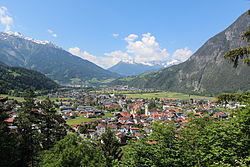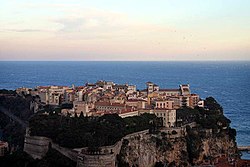
The Via Alpina is a network of five long-distance hiking trails across the alpine regions of Slovenia, Austria, Germany, Liechtenstein, Switzerland, Italy, France, and Monaco. [1] The longest of trails is the red trail, whose termini are in Trieste and Monaco.
Contents
The Via Alpina was created by a group of public and private organisations from the 8 Alpine countries in 2000, receiving EU funding from 2001 until 2008. It was initiated by the Association Grande Traversée des Alpes in Grenoble, which hosted the Via Alpina international secretariat until January 2014, when it was transferred to the International Commission for the Protection of the Alps CIPRA (Liechtenstein). There are national secretariats (hosted by public administrations or hiking associations) in each country. Its aim is to support sustainable development in remote mountain areas and promote the Alpine cultures and cultural exchanges.












